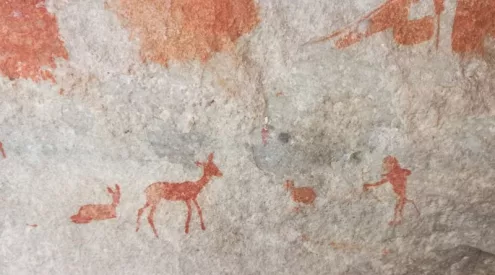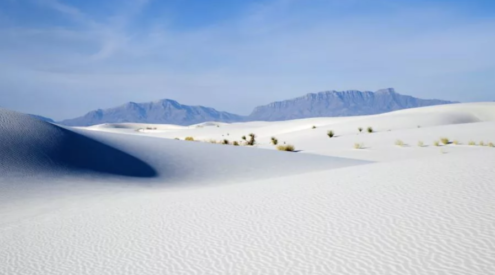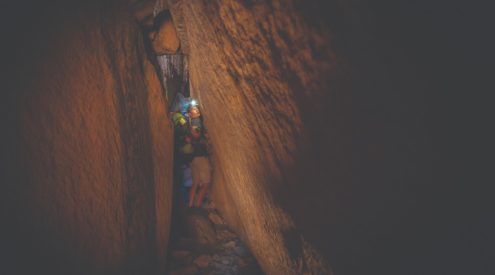Four cheetahs were introduced to the Mountain Zebra National Park (MZNP) back in 2007. Now there are 17 of them and because seven are collared, you can join a guide to track them by radio telemetry.
Before senior field guide Michael Paxton has even got his aerial out and started twiddling knobs, he’s already peppering us with information. The park’s carrying capacity for cheetah is around 15; the populations of mountain reedbuck, grysbok and springbok are down since the cheetahs were introduced, but research has still to discover whether or not this is because they’re ending up on the cheetah’s dinner menu. “˜We do know that a cheetah needs 5kg of meat per day to survive,’ says Michael. If you multiply that out by 17 cheetahs, that’s an awful lot of meat every year.
Springbok behaviour has changed since the cheetah came to stay. The females are bunching together in herds of 90 or 100 whereas before this kind of ‘safety in numbers’ wasn’t needed. “˜Being the top predators in this park has also changed the cheetahs’ own behaviour slightly,’ he adds. Whereas cheetah usually eat quickly even though they’re exhausted from the hunt, here they don’t have to worry about lions, spotted hyena or leopard stealing their kill, so they rest for 20 or 30 minutes before they start to feed.
As if to indemnify himself in case we don’t find any cheetah this morning, he explains that the mountainous terrain of the MZNP is problematic when tracking by radio telemetry; the signal bouncing off the mountains can be confusing. Nonetheless, along the Ubejane Loop we pick up the unique signal for Angela – one of the more stand-offish cheetahs, less likely to allow us to approach. We track her to one side of a koppie and then spot her sitting under an acacia halfway up the hill. She yawns and turns her head, then walks away another tree where she can lie down in the long grass, out of sight of pesky humans.
Michael sets off in search of another signal on a different frequency – a male called White Eyes, a.k.a. “˜the ostrich slayer’. We follow him up the 4×4 Juriesdam Loop then cut along a management track that allows Michael to show off his rock-driving skills. After 20 minutes of bundu bashing, we park and set off on foot. But White Eyes is playing hard to get, keeping ahead of us as if on a mission.
After 25 minutes, we head back to the vehicle for one last attempt. More rock crawling until we’re virtually above the rest camp. Funny if we’ve been tracking cheetah for nearly four hours and he’s walking along the camp fence where we started our journey.
Michael is disappointed. “˜White Eyes is pretty relaxed and let’s you approach on foot to 20 metres,’ he says. But we’re not worried. For us, it’s proof that this is no “˜canned’ experience, just a few humans sharing a wild cheetah’s territory for a short while. It’s been a privilege to drive around this scenic park, the mountains wrapping around the horizon in layers; to feel the excitement of knowing just where cheetahs are even if one of them eludes us once we stumble around on foot.
Besides, the outing hasn’t been only about cheetahs. Michael uses the veld as a prompt to point out things like a giant earthworm that’s three-feet long and looks like a snake. “˜They can grow to six feet,’ he says. He points out an aardwolf burrow, and we admire eland, hartebeest, gemsbok and some of the 700 Cape mountain zebra in the park.
We watch a group of four meerkat and chuckle as one nibbles on an itchy tail, falling head over heels backwards into the burrow like a clown. We even learn a scientific name that’s bound to stick: buffalo grass’s Latin name is Panicum maximum – easy enough to remember because if you’re on foot when you see one of these nasty-minded creatures, you “˜panic to the maximum’.
Having tracked Angela to the side of a koppie and White Eyes across more than one high mountain, we joke that here in the Mountain Zebra National Park, even the cheetahs are “˜mountain cheetahs’. “˜In the only cheetah kill I’ve seen here from start to finish,’ Michael tells us, “˜we later noted from the springbok carcass that one front leg was badly broken in the chase across the rocks.’
Having walked those rocky mountainsides in pursuit of White Eyes, we’re not surprised. We knew cheetahs were fast, we just hadn’t realised they could be as nifty across rocky 4×4 territory as they are on the open grasslands.
Information on Mountain Zebra National Park
You can find the Mountain Zebra National Park 12 kilometres from Cradock in the Eastern Cape. Accommodation in the park includes self-catering chalets and guesthouse. There’s also a pleasant campsite. Bookings: Central reservations tel 012 428-9111 or [email protected].
The cheetah experience costs R250 a person (only children older than 16 can take part in the experience). Book directly at Park reception, tel 048 881-2427, email: [email protected].

















